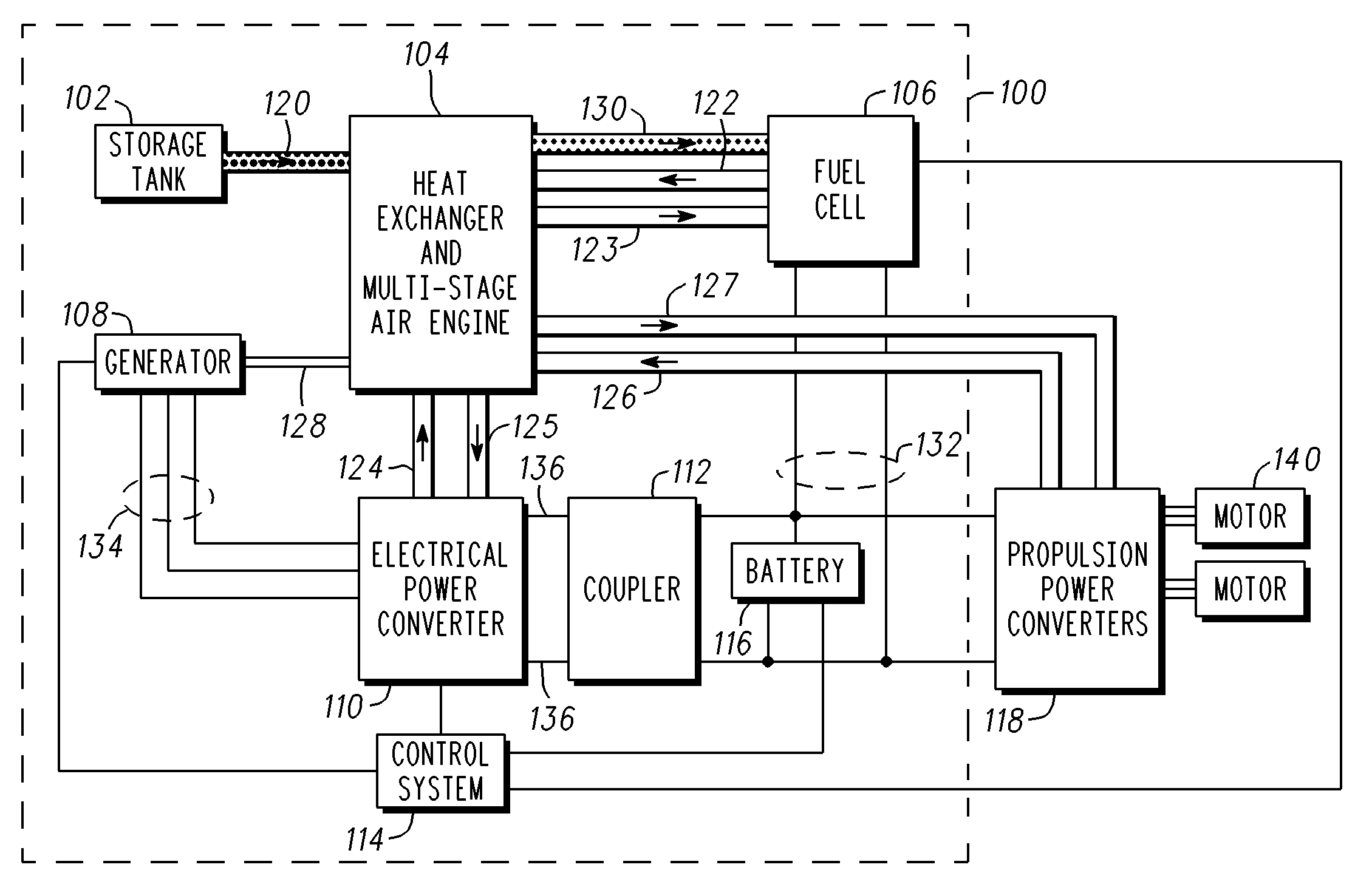Apparatus and method using hydrogen pressure in fuel cell electric vehicle
a technology of hydrogen pressure and electric vehicle, which is applied in the field of system and method for extracting energy from pressurized hydrogen, can solve the problems of power usage and complexity of the various electrical systems of automobiles, waste of pressure energy, and loss of energy (wasted), and achieves increased vehicle torque, more hydrogen flow, and high torque
- Summary
- Abstract
- Description
- Claims
- Application Information
AI Technical Summary
Benefits of technology
Problems solved by technology
Method used
Image
Examples
Embodiment Construction
[0016]The following detailed description of the invention is merely exemplary in nature and is not intended to limit the invention or the application and uses of the invention. Furthermore, there is no intention to be bound by any expressed or implied theory presented in the preceding technical field, background, brief summary or the following detailed description.
[0017]A system and method for extracting pressure energy and regulating hydrogen flow reuses waste heat to heat hydrogen during expansion when released from pressurized storage to increase range / distance of an electric vehicle. Heat is provided to the expanding hydrogen which drives a multi-stage “air” (hydrogen powered) engine and thus a generator for providing electricity to charge the electric vehicle's battery. It should be understood that “air” is used to describe a type of engine, and is not limited to using air (a combination mainly of oxygen and nitrogen gases) as popularly defined. The term “air” could include any...
PUM
| Property | Measurement | Unit |
|---|---|---|
| pressure | aaaaa | aaaaa |
| absolute pressure | aaaaa | aaaaa |
| absolute pressure | aaaaa | aaaaa |
Abstract
Description
Claims
Application Information
 Login to View More
Login to View More - R&D
- Intellectual Property
- Life Sciences
- Materials
- Tech Scout
- Unparalleled Data Quality
- Higher Quality Content
- 60% Fewer Hallucinations
Browse by: Latest US Patents, China's latest patents, Technical Efficacy Thesaurus, Application Domain, Technology Topic, Popular Technical Reports.
© 2025 PatSnap. All rights reserved.Legal|Privacy policy|Modern Slavery Act Transparency Statement|Sitemap|About US| Contact US: help@patsnap.com



